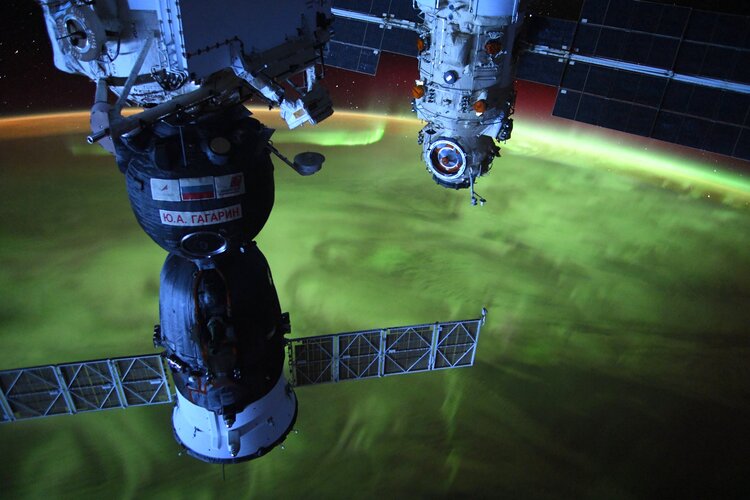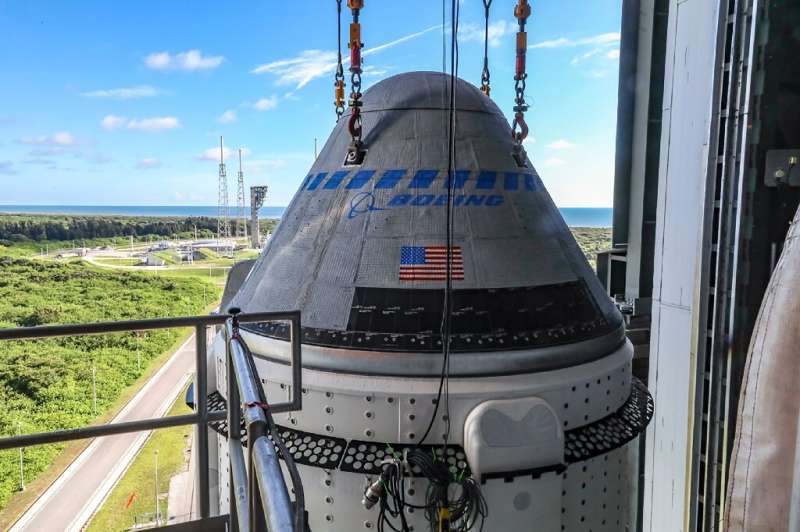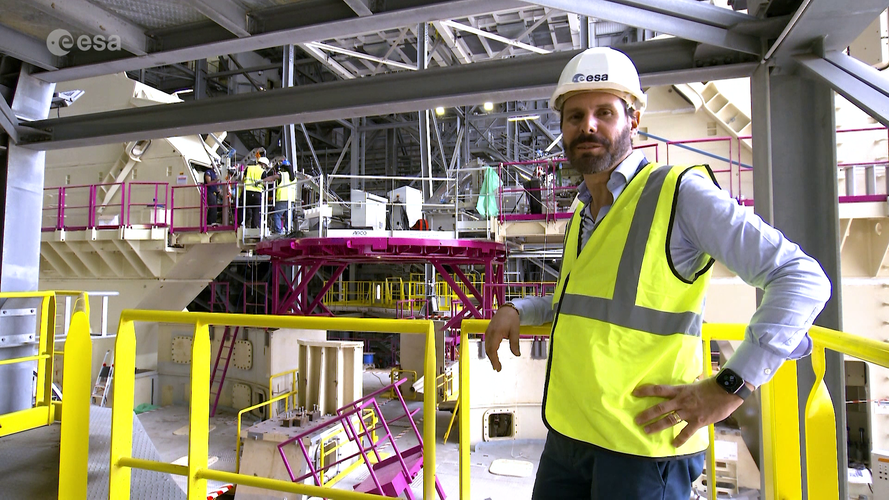
Copernical Team
Calm above the storm
 Image:
Image:
Auroras make for great Halloween décor over Earth, though ESA astronaut Thomas Pesquet snapped these green smoky swirls of plasma from the International Space Station in August. Also pictured are the Soyuz MS-18 “Yuri Gagarin” (left) and the new Nauka module (right).
The Station saw quite some aurora activity that month, caused by solar particles colliding with Earth’s atmosphere and producing a stunning light show.
Fast forward to October and space is quite busy.
On 9 October the Sun ejected a violent mass of fast-moving plasma into space that arrived at Earth a few days later. The coronal mass ejection (CME)
Boeing aims for unmanned Starliner test flight in first half of 2022

Boeing is aiming for a test flight of its unmanned CST-100 Starliner capsule in the first half of next year and a potential launch of its crewed spacecraft at the end of 2022, company officials said Tuesday.
The CST-100 had been scheduled to fly to the International Space Station (ISS) from Cape Canaveral, Florida, on August 3 but the flight was aborted just hours before launch because of problems with propulsion system valves.
Boeing officials told reporters in a briefing on Tuesday that they were still conducting testing of the valves but they may heve become stuck because of moisture or condensation.
"Normal environment humidity was likely the source of that moisture in the valves," Michelle Parker, Boeing Space and Launch chief engineer, said.
Back to gravity: Russians talk about world's 1st space movie

Humans to blame for warming lakes

While the climate crisis is, unfortunately, a reality, it is all too easy to assume that every aspect of our changing world is a consequence of climate change. Assumptions play no role in key environmental assessments and mitigation strategies such as we will see in the upcoming UN climate change COP-26 conference – it’s the science and hard facts that are critical. New research published this week is a prime example of facts that matter. Using model projections combined with satellite data from ESA’s Climate Change Initiative, this latest research shows that the global rise in the temperature of
Welcome to the Ariane 6 launch complex
 Video:
00:03:03
The Ariane 6 launch complex is a marvel of engineering. Take a tour at Europe’s Spaceport in French Guiana.
Video:
00:03:03
The Ariane 6 launch complex is a marvel of engineering. Take a tour at Europe’s Spaceport in French Guiana. Scientists find evidence the early solar system harbored a gap between its inner and outer regions
 In the early solar system, a "protoplanetary disk" of dust and gas rotated around the sun and eventually coalesced into the planets we know today.
A new analysis of ancient meteorites by scientists at MIT and elsewhere suggests that a mysterious gap existed within this disk around 4.567 billion years ago, near the location where the asteroid belt resides today.
The team's results, ap
In the early solar system, a "protoplanetary disk" of dust and gas rotated around the sun and eventually coalesced into the planets we know today.
A new analysis of ancient meteorites by scientists at MIT and elsewhere suggests that a mysterious gap existed within this disk around 4.567 billion years ago, near the location where the asteroid belt resides today.
The team's results, ap San Andreas Fault-like tectonics discovered on Saturn moon Titan
 Strike-slip faulting, the type of motion common to California's well-known San Andreas Fault, was reported recently to possibly occur on Titan, Saturn's largest moon. New research, led by planetary scientists from the University of Hawai?i at Manoa School of Ocean and Earth Science and Technology (SOEST), suggests this tectonic motion may be active on Titan, deforming the icy surface.
On m
Strike-slip faulting, the type of motion common to California's well-known San Andreas Fault, was reported recently to possibly occur on Titan, Saturn's largest moon. New research, led by planetary scientists from the University of Hawai?i at Manoa School of Ocean and Earth Science and Technology (SOEST), suggests this tectonic motion may be active on Titan, deforming the icy surface.
On m Climate model shows that Venus could never have had oceans
 Whether Venus, one of the Solar System's four terrestrial planets, ever had oceans remains an unsolved puzzle. Although an American study hypothesized that it did, this is now challenged in a paper published on October 14, 2021 in Nature, involving in particular scientists from the CNRS and University of Versailles-Saint Quentin-en-Yvelines1 (UVSQ).
Using a state-of-the-art climate model,
Whether Venus, one of the Solar System's four terrestrial planets, ever had oceans remains an unsolved puzzle. Although an American study hypothesized that it did, this is now challenged in a paper published on October 14, 2021 in Nature, involving in particular scientists from the CNRS and University of Versailles-Saint Quentin-en-Yvelines1 (UVSQ).
Using a state-of-the-art climate model, The unusual magnetic fields of Uranus and Neptune
 Not all ice is the same. The solid form of water comes in more than a dozen different - sometimes more, sometimes less crystalline - structures, depending on the conditions of pressure and temperature in the environment. Superionic ice is a special crystalline form, half solid, half liquid - and electrically conductive. Its existence has been predicted on the basis of various models and has alre
Not all ice is the same. The solid form of water comes in more than a dozen different - sometimes more, sometimes less crystalline - structures, depending on the conditions of pressure and temperature in the environment. Superionic ice is a special crystalline form, half solid, half liquid - and electrically conductive. Its existence has been predicted on the basis of various models and has alre Mixing system prototype for future greenhouses on the Moon
 Developing greenhouse systems is of great importance and requires Bio-regenerative Life Support Systems (BLSS) to ensure that the lives of crew members are sustained. Two new prototypes of a nutrient mixing system for future Moon and Mars greenhouse modules have now been completed and installed following a successful design and development phase between Priva and the German Aerospace Center (Deu
Developing greenhouse systems is of great importance and requires Bio-regenerative Life Support Systems (BLSS) to ensure that the lives of crew members are sustained. Two new prototypes of a nutrient mixing system for future Moon and Mars greenhouse modules have now been completed and installed following a successful design and development phase between Priva and the German Aerospace Center (Deu 